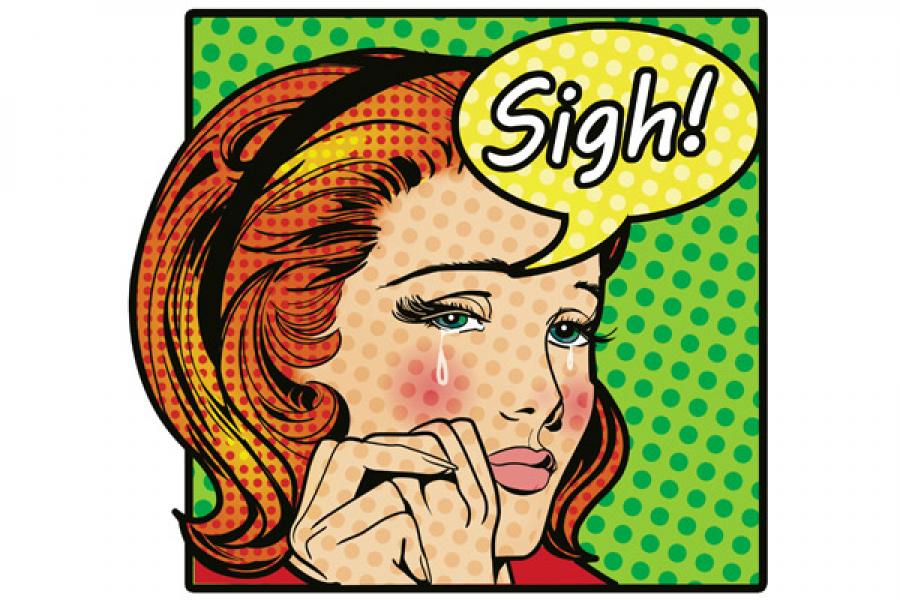
Sigh Language
Your sigh may be telling you something
A sigh is a deep inhalation and exhalation that stimulates the parasympathetic nervous system to take the body into a state of relaxation. It causes blood pressure to drop and heart rate to slow down. And why do we sigh? According to Elke Vlemincx of the University of Leuven in Belgium, who has published widely on this topic, we have psychological and physiological reasons to sigh.
“Psychologically, spontaneous sighs are related to relief. Therefore, sighs may occur more when we want to express relief, or when we need to control or cope with negative situations or feelings,” she says. The body has its own reading for stress signals and creates a way for the body to enter a relaxed state even if we are not aware of it.
Alex (Sandy) Pentland of the MIT Media Lab describes a sigh as an unconscious signal that the body lets out. In his book Honest Signals, Pentland illustrates how honest signals such as a sigh tell the world a lot about what is going on in our heads. Observe the next time you are in a conversation on a touchy topic that is not going your way; you may let out a sigh. Completely natural and healthy — the sigh releases neurotransmitters that stimulate relaxation responses to take you away from the conversation. But can you mask or defer a sigh if you would like to conceal your exasperation? To answer that let’s first understand why we sigh from a physiological perspective.
“Physiologically, we sigh when our breathing doesn’t vary enough, or when our breathing becomes too irregular,” explains Vlemincx. “When our breathing doesn’t vary; the time we breathe in and out, or the volumes we breathe in and out are continuously the same, the alveoli [air sacs] in the lungs progressively collapse and our lungs become stiff.” A sigh opens up the alveoli to restore in the lung the ability to expand fully on inspiration.
Irregular breathing leads to unstable respiration according to Vlemincx, and “a sigh restores a healthy respiratory pattern”.
So, a sigh is your body pressing its temporary reset button. Here are some tips on how to preempt a sigh, or use the sigh as a cue to change something in three common situations.
1. The killer cocktail conversation that is triggering negative feelings: In this case you will not be able to preempt the sigh, but you can use it as a cue to save yourself from drowning and check if anyone needs a refill.
2. The gruelling presentation you have to make: Studies have shown that stress leads to more variable breathing. To counter that, take deep and regular breaths before engaging in the activity. If you sense a sigh, you aren’t breathing deeply or regularly enough.
3. The sustained attention you need for multi-tasking: Tasks that require sustained attention cause rapid, shallow, monotonic breathing. To break out of the loop, practice deep, abdominal breathing.
Finally, next time you get a massage, whether or not you sigh is an indicator of how effective it was. If through the massage or other form of energy healing, you release an area of tension, you will spontaneously give out a big sigh.
Vikram Sheel Kumar, MD, The author is a graduate of Harvard Medical School and is founder and vice president of Doctor Kares Hospital
Dr. Meena Kumar, a Boston-based physician in functional medicine, contributed to this piece. Dr. Kumar, and our health team, can be contacted at health.forbesindia@network18online.com
(This story appears in the 20 January, 2012 issue of Forbes India. To visit our Archives, click here.)
-
 Ketan Dhad
Ketan DhadNice Read, an interesting article!
on May 5, 2014















